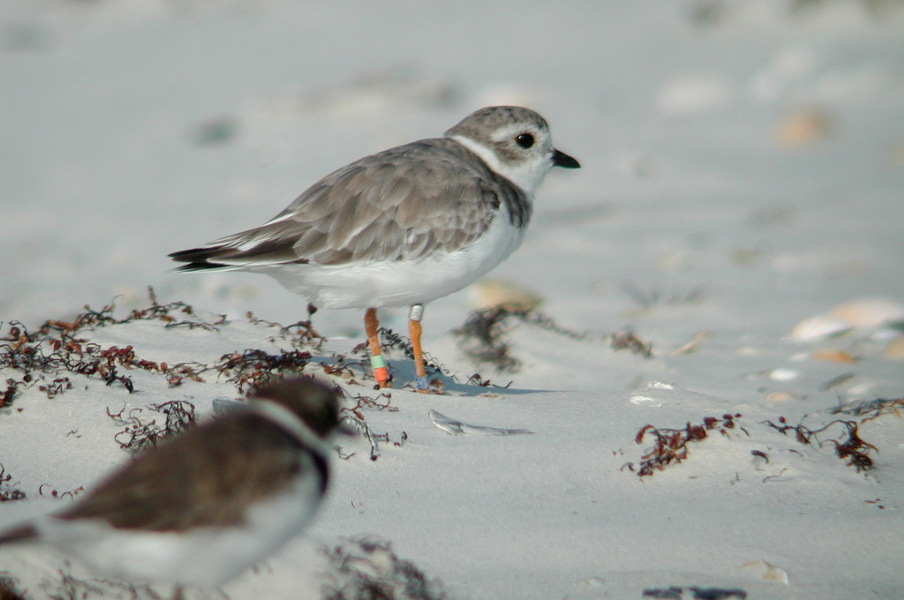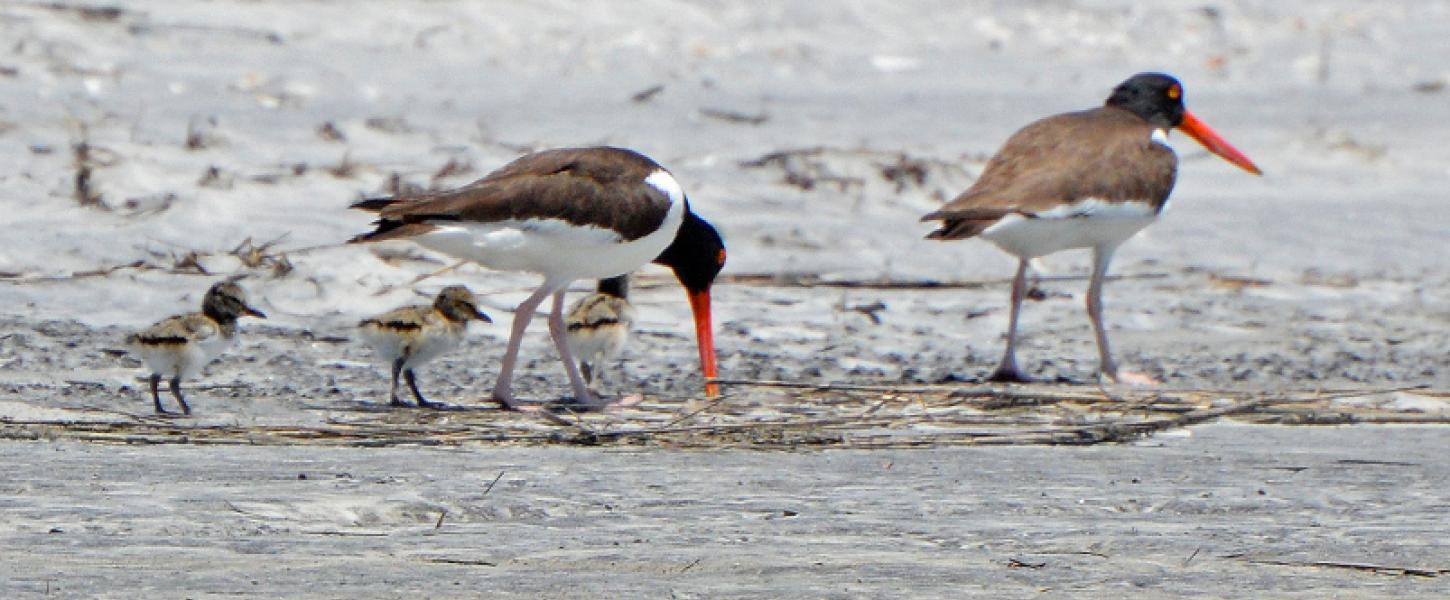
Wild Places of Little Talbot

Don’t let their small size fool you, because shorebirds are of very large importance to Little Talbot Island State Park. Dozens of species use the park as a critical stopping point along long migratory routes and for nesting and rearing their young. This wild landscape provides a refuge from disturbance and development for sensitive shorebirds, along a coastline that is otherwise intensely altered.
Overwintering shorebirds arrive in late summer and stay through early spring. Piping plovers, a federally protected species, can be seen foraging on the beach sand for marine invertebrates as the tides change. They will migrate north to the Great Lakes and New England shorelines to breed during the summer.
Roughly 3,000 breeding pairs remain in the United States and Canada, and intensive monitoring of these individuals is conducted by researchers year-round. Many individuals sport colorful leg bands that help scientists identify and track the birds across their range. Other winter residents include ruddy turnstones, sandlerlings, least sandpipers, dunlins and dowitchers. Marathon migrators, the protected red knots stop to refuel as they fly from Tierra del Fuego to the North Pole twice a year. They feast on horseshoe crab eggs and donax.

Spring brings nesting season at Little Talbot, and the songs of love fill the air as Wilson’s plovers, American oystercatchers, willets, least terns and black skimmers begin their courtship rituals. After they lay well-camouflaged eggs in scrapes, depressions in the sand, their nesting sites are roped off and closed to visitors to prevent accidental disturbance.
After incubating eggs for about three weeks, adorable fluffy and precocial chicks hatch and shadow their parents foraging and resting along the shore. In another three weeks, they’ll take flight on their own. Visitors may catch a glimpse of these sweet family scenes from April through September, and volunteer stewards are always welcome to help inform beachgoers about the importance of these birds. Their presence creates a crucial link between marine and terrestrial ecosystems as their guano fertilizes the barren sand dunes and encourages colonizing plant growth and subsequent dune formation.

Protection of shorebirds is essential to this park, and a state Critical Wildlife Area has been designated at the north end of Little Talbot Island by the Florida Fish and Wildlife Conservation Commission. Named the Nassau Sound Islands CWA, it is one of only 32 such protected areas in the entire state. Visitors can learn more about it from interpretive signs at the north beach.